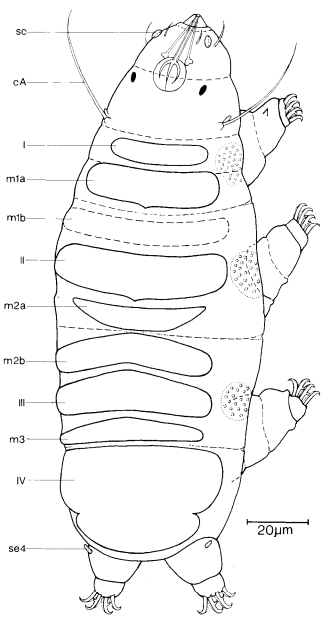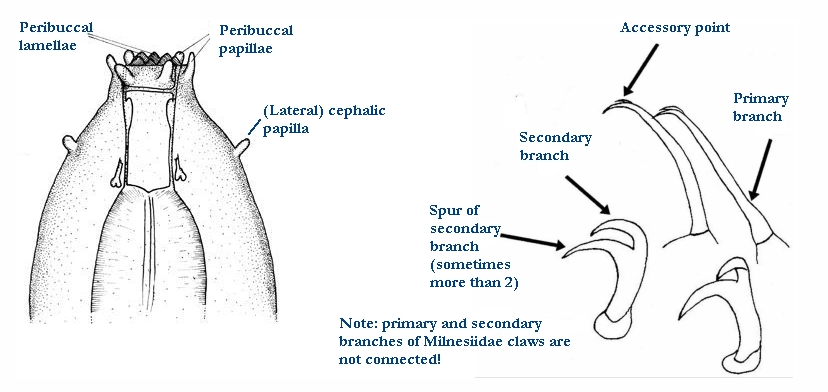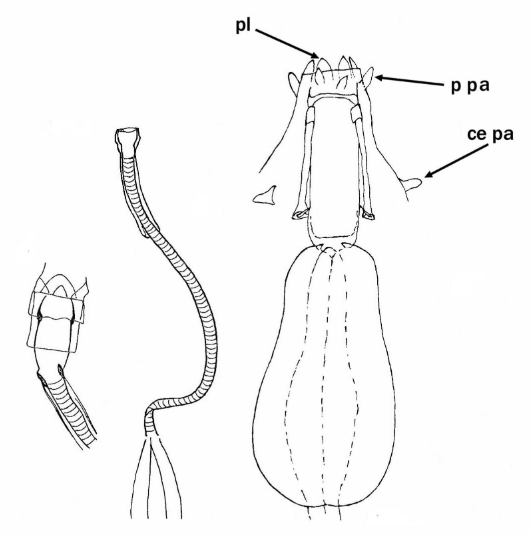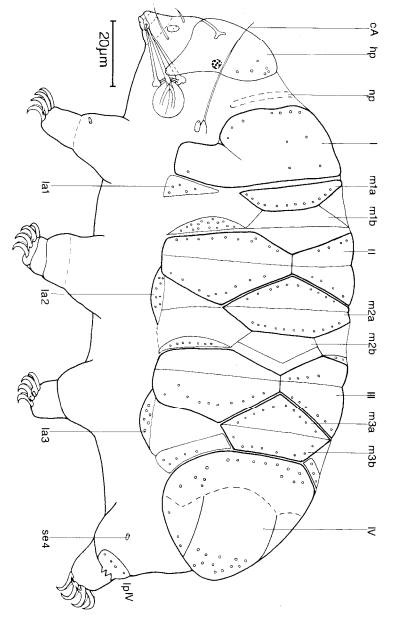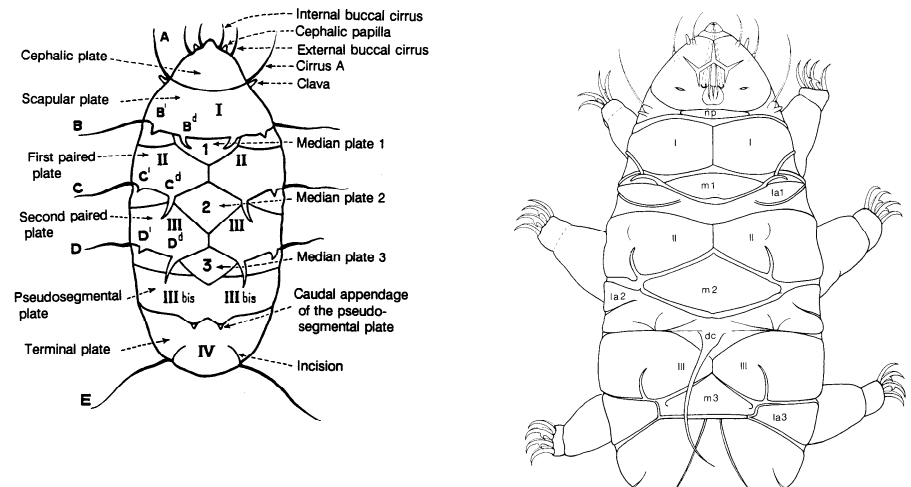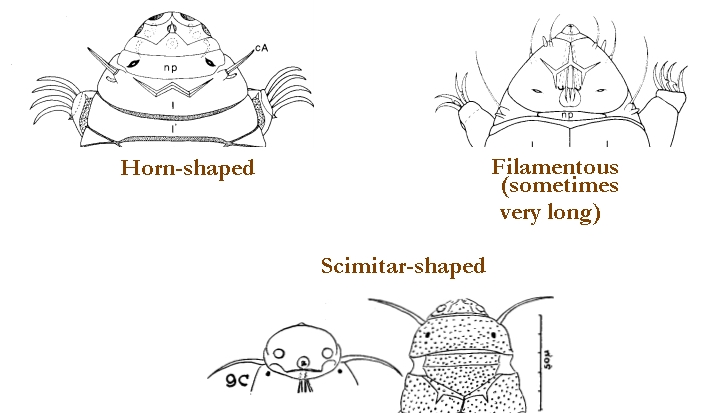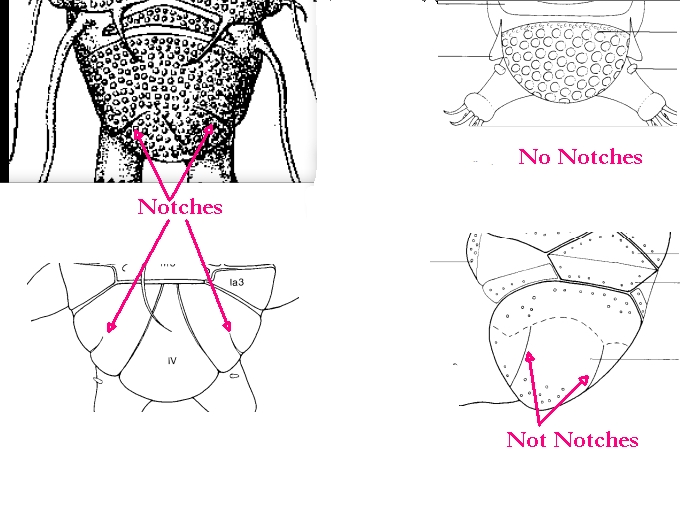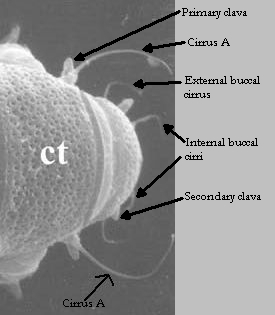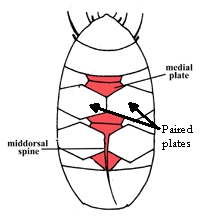From Ramazzotti & Maucci: “The plates are not well defined in the rostral part of the dorsum, better defined in the caudal part.”
From Kristensen 1987: “Echiniscidae with small black eyes, rigid buccal tube, stylet supports absent, 8-9 dorsal plates, unpaired and more or less indistinct; secondary clavae dome shaped; uncoloured to grey. Emended description: The head without plate, but a segmental line near the area of the eyes separates the anterior part of the animal into a small head area with secondary clavae, external and internal cirri, and a larger neck area with the primary clavae and cirri A. The scapular plate (I) is small and can only be seen in relaxed animals. Two intersegmental plates 1 (m 1a, m lb) exist. The posterior margin of the plate 1a has a mid-dorsal point. The segment plate II has the same posterior point. Two slightly bended intersegmental plates 2 (m 2a, m 2b) are present. Plate m 2b has a form like a boomerang, and the segmental plate III has the same shape. A small intersegmental plate 3 is present. The caudal plate (IV) is large with small lateral incisions. The granulation of the plates consists of three types: 1) finely punctuation (pillar structure), 2) distinct light area (depression in the cuticle) and 3) indistinct dark circular field (elevation of the cuticle). The dark circular fields are seen laterally on each side of the animal, too. The lateral areas, where this structure is found, correspond with the segmental plates I-IV. The 2-clawed larva lack all plates and only the finely punctuation in the cuticle is present. Males were not found. The cephalic appendages consist of small papillate primary clavae, relatively long cirri A, each with small cirrophore, dome-shaped secondary clavae, short internal cirri and medium long external cirri, both the internal and external cirri lack cirrophores. Trunk cirri are absent; the leg I has a very small pointed sense organ, and the leg IV has a small papilla. The claws are tiny, the internal claws each have a secondary spur midventrally. The external claws only have the primary spur. The buccal apparatus have a short rigid tube, the placoids are CaCO3 encrusted, too. The stylets are longer than the tube, the furca of the stylet is small and insert onto the pharyngeal bulb. The stylet supports are absent.”
Black eye spots (single ovoid with unpigmented middle), many very thin plates never transversely divided.
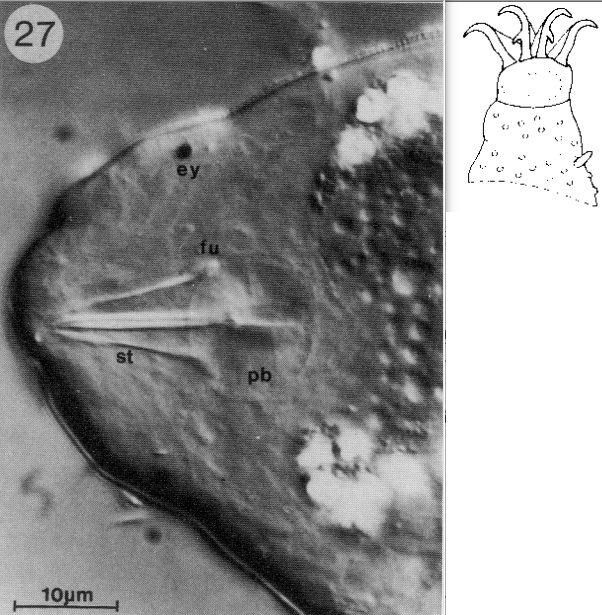
Citations:
Kristensen RM. 1987. Generic revision of the Echiniscidae (Heterotardigrada), with a discussion of the origin of the family. pp. 261-335 in Bertolani R (ed). Biology of Tardigrades: Selected symposia and monographs.
Ramazzotti G, Maucci W. 1983. Il phylum Tardigrada(III edizione riveduta e aggiornata). English translation by C. W. Beasley, 1995. Memorie dell’ Istituto Italiano di Idrobiologia 41: 1-1012.
